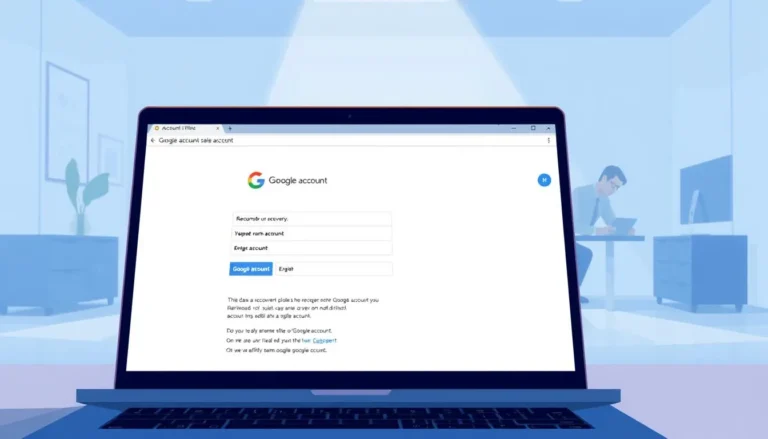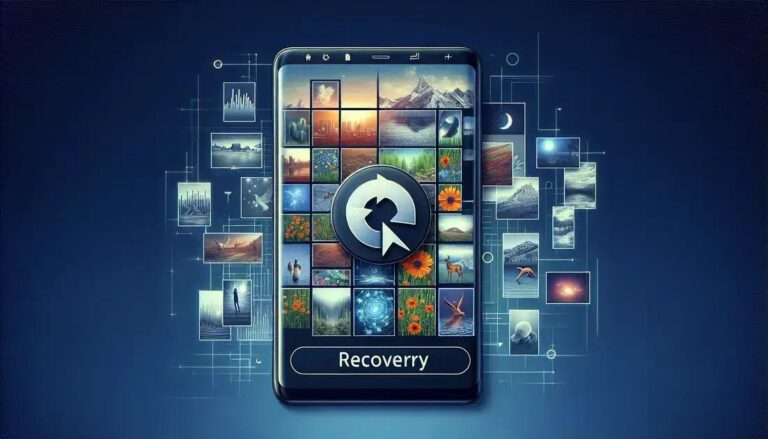Recover Deleted Photos: solutions for photo recovery
Accidentally deleting precious memories from your device can be devastating, but learning to recover deleted photos opens up many solutions.
Discover powerful methods and tools that can retrieve your lost images from phones, cameras, and storage devices quickly.
Start exploring these proven recovery techniques today and get back those irreplaceable moments you thought were gone forever.
Understanding Photo Deletion and Recovery Basics
When you delete photos from your device, they don’t disappear immediately from the storage memory, making it possible to recover deleted photos successfully.
Your device marks the space as available for new data, but the original image files remain intact until something overwrites that specific location.
This temporary state creates a recovery window where specialized tools can scan your device and locate these hidden files for restoration purposes.
Top Photo Recovery Apps for Mobile Devices
Several excellent photo recovery app options can help restore your lost images directly from your smartphone without needing computer assistance.
These mobile applications scan your device’s internal storage and SD cards to locate recoverable image files that standard gallery apps cannot display.
Most recovery apps work without root access on Android devices, though rooted phones typically achieve better results for deeper system scanning.
DiskDigger Photo Recovery
DiskDigger stands out as a reliable phone gallery recovery solution that works on both rooted and non-rooted Android devices effectively.
The app offers two scanning modes: basic scan for recently deleted files and full scan for deeper recovery on rooted devices.
Users can preview recovered images before restoration and save them directly to cloud storage or different device locations safely.
Dumpster Recycle Bin
This deleted pics app functions like a computer recycle bin, automatically catching files before they’re permanently removed from your device.
Once installed, Dumpster protects future deletions by storing removed files in a secure folder for easy restoration when needed.
The app supports various file types including photos, videos, documents, and audio files with customizable storage duration settings.
Computer-Based Image Retrieval Software
Professional image retrieval software running on computers often provides more comprehensive scanning capabilities than mobile apps for complex recovery situations.
These desktop programs can analyze device storage at deeper levels and handle corrupted files that mobile solutions might miss during scanning.
Computer software typically offers batch recovery options, allowing you to restore hundreds of photos simultaneously rather than processing them individually.
Recuva by Piriform
Recuva represents one of the most trusted deleted files restore programs available, offering both free and professional versions for different needs.
The software supports recovery from hard drives, memory cards, USB drives, and connected mobile devices with detailed scanning options.
Advanced features include secure overwrite prevention and deep scan modes that can locate files even after formatting or corruption occurs.
PhotoRec Recovery Tool
PhotoRec excels as a powerful device recovery tool that focuses specifically on multimedia files including photos, videos, and audio recordings.
This open-source solution works across multiple operating systems and can recover files from damaged or corrupted storage devices effectively.
The program bypasses filesystem damage by searching for file signatures directly, making it effective even when traditional recovery methods fail.
Android Photo Recovery Solutions
Android photo recovery requires understanding how different Android versions handle file deletion and storage management across various device manufacturers.
Modern Android devices use different storage protocols, so effective recover deleted photos strategies must adapt to specific device configurations and Android versions.
Some manufacturers include built-in recovery features, while others require third-party solutions for accessing deleted file recovery capabilities.
Google Photos Trash Recovery
Google Photos automatically backs up images and stores deleted photos in a trash folder for 60 days before permanent removal.
Users can easily restore gallery images by accessing the trash section within the Google Photos app and selecting desired photos for restoration.
This backup photo recovery method works seamlessly across devices when automatic sync is enabled before deletion occurs.
Samsung Gallery Recycle Bin
Samsung devices include a built-in gallery image recovery feature that stores deleted photos in a recycle bin for 30 days.
The native Samsung Gallery app provides direct access to this recovery folder without requiring additional software installation.
Users can batch restore multiple images or permanently delete them from the recycle bin to free up storage space.
SD Card Image Recovery Methods
Memory cards store photos differently than internal device storage, creating unique opportunities for SD card image recovery using specialized techniques.
External storage cards maintain file structures that remain accessible even after deletion, making recovery often more successful than internal memory.
Professional recovery tools can scan memory cards sector by sector to locate and reconstruct damaged or deleted image files.
Essential SD card recovery steps include:
- Immediately stop using the card after discovering deleted photos
- Connect the card to a computer using a reliable card reader
- Run specialized recovery software designed for flash memory
- Preview recovered files before saving to avoid corrupted images
- Save recovered photos to a different storage location
Camera Roll Backup and Recovery Strategies
Modern smartphones automatically create camera roll backup copies through cloud services, providing multiple recovery options when photos disappear.
Understanding your device’s backup settings helps locate alternative sources where your recover deleted photos efforts might succeed quickly.
Multiple backup services often run simultaneously, creating redundant photo storage that increases recovery success rates significantly.
iCloud Photo Recovery
iPhone users benefit from iCloud’s recently deleted album that stores removed photos for 30 days before permanent deletion.
The Photos app provides direct access to this recovery folder, allowing users to restore individual images or entire photo collections.
iCloud backup also maintains complete photo libraries that can be restored during device setup or through manual sync processes.
OneDrive and Dropbox Recovery
Microsoft OneDrive and Dropbox maintain their own recycle bins for deleted files, including photos uploaded through automatic camera backup features.
These cloud services typically retain deleted files for extended periods, often 30-90 days depending on account type and available storage.
Web interfaces provide comprehensive file management tools including batch restoration and permanent deletion options for recovered photos.
Professional Digital Restore App Solutions
Advanced digital restore app solutions combine multiple recovery techniques to maximize success rates for challenging photo loss situations.
These comprehensive tools analyze storage devices using various algorithms to locate recoverable data that simpler applications might miss.
Professional solutions often include preview capabilities, selective recovery options, and support for numerous file formats and storage types.
Popular professional recovery features include:
- Deep scanning algorithms that analyze storage at binary levels
- Support for corrupted or damaged storage devices
- Batch processing capabilities for large photo collections
- Preview functionality to verify photo quality before recovery
Image Restore Tips for Maximum Success
Following proven image restore tips significantly improves your chances of successfully recovering deleted photos from any device or storage medium.
Time becomes critical in photo recovery situations, as continued device use can overwrite deleted files and make recover deleted photos impossible.
Proper technique and tool selection often determine whether recovery attempts succeed or fail completely in challenging situations.
Critical recovery guidelines include:
- Stop using the device immediately after discovering deleted photos
- Avoid installing recovery apps directly on the affected device
- Use computer-based recovery tools when possible for better results
- Make multiple backup copies of successfully recovered photos
- Consider professional data recovery services for irreplaceable images
Prevention Strategies for Future Photo Protection
Implementing comprehensive backup strategies prevents future photo loss situations and eliminates the need for emergency recovery procedures.
Multiple backup methods create redundancy that protects against device failure, accidental deletion, and storage corruption issues.
Automated backup solutions work continuously in the background, ensuring your photos stay protected without requiring manual intervention or regular maintenance.
Cloud Storage Solutions
Cloud services like Google Photos, iCloud, and Amazon Photos provide unlimited or high-capacity storage for automatic photo backup protection.
These services sync photos immediately after capture, creating instant off-device copies that remain accessible even if your phone is lost.
Most cloud providers offer family sharing plans that protect photos from multiple devices under a single account subscription.
Local Backup Methods
External hard drives and network-attached storage devices provide local backup options that keep your photos under direct personal control.
Regular manual backups or automated sync software can maintain current photo collections on multiple storage devices simultaneously.
Local backups work independently of internet connections and provide faster access for large photo collections during recovery situations.
Conclusion
Successfully learning to recover deleted photos requires understanding various recovery methods and choosing appropriate tools for your specific situation.
Quick action combined with proper recovery techniques significantly increases your chances of retrieving lost photos from any device or storage medium.
Implementing preventive backup strategies protects future photos while recovery knowledge helps handle unexpected deletion situations with confidence and success.
Frequently Asked Questions
Can I recover photos deleted months ago from my phone?
Recovery success decreases over time as new data overwrites deleted files, but specialized software might still locate older photos depending on device usage.
Do photo recovery apps work without rooting Android devices?
Many photo recovery app solutions work on non-rooted devices, though rooted phones typically provide access to deeper storage areas for better results.
Is it safe to use free photo recovery software?
Reputable free recovery tools like Recuva are safe, but always download from official sources and scan files for malware before installation.
How long do deleted photos stay in phone recycle bins?
Most phone gallery recovery systems keep deleted photos for 15-60 days, depending on manufacturer settings and available storage space.
Can water damage prevent photo recovery from phones?
Water damage complicates recovery but doesn’t always prevent it; professional data recovery services can often extract photos from damaged devices successfully.






